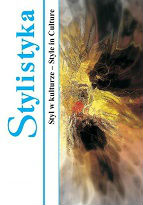GWARA W TWÓRCZOŚCI NOWEJ FALI PROZAIKÓW ŚLĄSKICH. WOJCIECH KUCZOK I SZCZEPAN TWARDOCH
Dialect in the literary works of the new wave of Silesian prose writers Wojciech Kuczok and Szczepan Twardoch
Author(s): Bogusław WyderkaSubject(s): Language and Literature Studies, Studies of Literature, Polish Literature
Published by: Uniwersytet Opolski
Keywords: Wojciech Kuczok; Szczepan Twardoch; Silesian linguistic image; Silesian dialect; stylization
Summary/Abstract: Wojciech Kuczok and Szczepan Twardoch are prominent writers of Silesian origins. Their opuses, in particular Kuczok’s Gnój and Twardoch’s Drach occupy prized place in modern Polish literature. Both authors apply native dialect in their literary works. Regarding the subject of their works and the use of linguistic material it is impossible to separate the conclusions from the analysis from the perennial discussions about the culture and Silesian language. The literary output of both authors inscribe in the above mentioned discourse. Thus the linguacultural picture, presented as a part of world depicted in their works, is very important. For many readers from outside Silesia, Kuczok and Twardoch’s works are a source of information about the region: its character and problems. The article discusses how the image of Silesia in the level of narration is depicted, what is the role of the dialect in its creation, or more specifically the application of the methods of linguistic stylization. The analysis of the methods of stylization shows profound dissimilarity between the two authors, however, the created image of Silesia is close. Kuczok’s stylization can be described as selective, while Twardoch’s stylization is holistic. Moreover, it is realistic and contains distinct Silesian orthography. In the linguistic picture of Silesia both authors pay attention to the identity dichotomization of Silesian populace, multilingualism, the presence of mixed forms (wasserpolnisch), variability of nomenclature, linguistic relics and innovations created in the background of the cultural differences of the region. The novelists present the “linguistic Silesia” by the similar content, although their styles and the application of the dialect are different. In the literary works of Kuczok, mainly in Gnój, the iconic quotations suggest images and subtle stylization for Silesian dialect. In Twardoch’s Drach, on the other hand, the “linguistic Silesia” is visible in every level of text organization. Drach is a novel about Silesians and their language, written in their mother tongue. Thereupon a question emerges – whether Silesian language in the novel does not overwhelm the readers. Some of the critics claim that reading Drach is difficult. Another emerging matter is whether in Drach the stylization is still dialectic or whether is already a bilingual material. Omnipresence of the Silesian language, however, indicates the latter interpretation.
Journal: Stylistyka
- Issue Year: 2016
- Issue No: XXV
- Page Range: 409-428
- Page Count: 19
- Language: Polish

